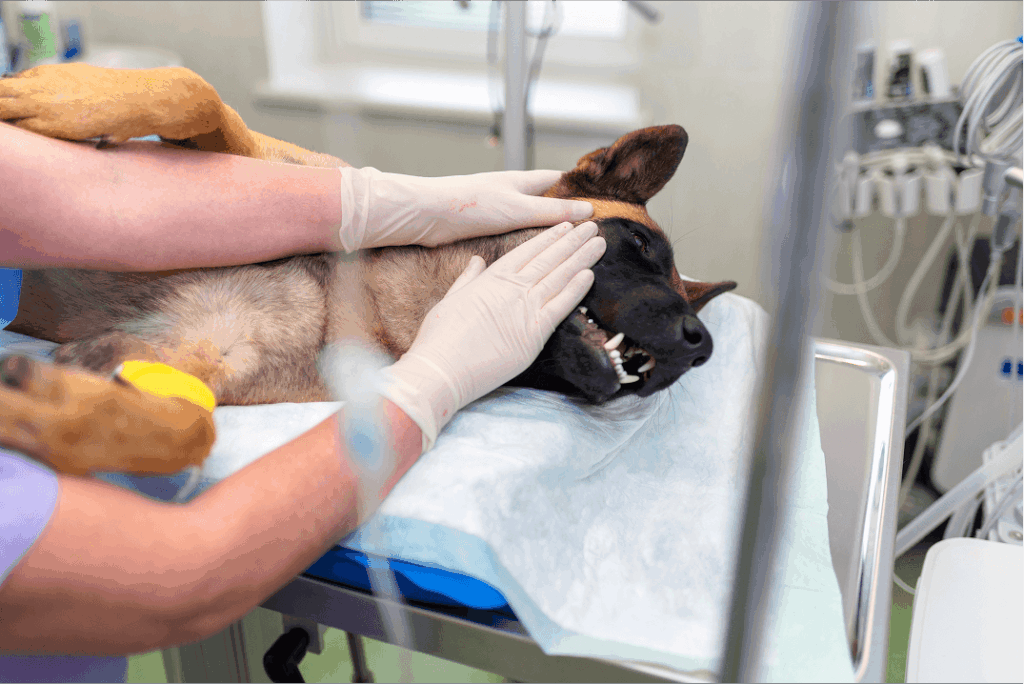Dog Neutering: Everything Pet Owners Should Know About Surgery
If your beloved pet is scheduled for an upcoming neuter procedure, you may have a few questions about the process. Though neutering is an extremely common procedure, many pet owners don’t actually know what the process entails.
What Is a Neuter?
The term neuter can technically apply to both male and female animals, but it most often refers to male dog castration—the removal of the testicles under general anesthesia.
By neutering your dog, a veterinarian prevents him from reproducing and helps lower the risk of several health and behavior problems that are common in intact (non-neutered) males. If you’re still deciding, it’s worth reading about what happens if you don’t spay or neuter your pet.
Average neuter time: ~20 minutes once anesthesia is in effect
Recovery time: Most dogs go home the same day; activity is limited for 10–14 days
Comfort: With proper aftercare, a neuter is often considered an easy recovery. Most pets can go home the same day as surgery, and only require about 10-14 days of minimal activity.
What Happens During Dog Neuter Surgery?
During the standard neuter procedure, both testicles will be removed under general anesthesia. So, how does the surgery proceed?
- The veterinarian makes a small incision near the scrotum
- Each testicle is exteriorized, the blood vessels are tied off, and the testicles are removed
- The incision is closed with sutures
Once testicles are removed, your dog can no longer reproduce and will be free of many instinctual behaviors that are driven by testosterone such as marking, roaming, or aggression toward other males.

Benefits of Dog Neutering
Many pet owners think the main purpose of neutering an animal is to prevent unwanted pregnancies but that’s not necessarily the case. While controlling the overpopulation of dogs is extremely important, there are also incredible health benefits that come along with the procedure. Some of the many benefits of neutering your pet outside of reproduction prevention include:
- Prevents testicular cancer, a life-threatening disease in intact males
- Lowers risk of prostate issues, including painful infections (prostatitis)
- Reduces roaming and escape attempts, making your dog safer
- Helps decrease aggression toward other dogs and sometimes people
- Reduces marking and indoor urination related to hormones
As you can see, there are many benefits to neutering the furry friend in your life. Neutering your pet will help to promote a healthier and happier life going forward.
Types of Dog Neuter Procedures
While the end goal of each procedure is the same, there are a few different options for the male pets in our lives. The different types of neuter procedures available include:
- Pre-Scrotal Neuter (Traditional Castration)
This is the most common method and what most pet owners imagine when they hear “neuter.” The vet makes a small incision just in front of the scrotum. Both testicles are removed through this incision. Quick, routine, and usually easy to recover from. Think of this as the “standard” neuter most dogs receive.
- Scrotal Ablation
This sounds complicated, but it simply means the vet removes the entire scrotal sac along with the testicles. Often recommended for older dogs or those with scrotal trauma. Helps reduce post-op complications like swelling or bleeding. It can also be chosen for cosmetic reasons (the area looks smoother afterward). It’s less common, but sometimes it’s the safest and cleanest option.
- Vasectomy in Dogs
Yes, just like in people! A vasectomy leaves the testicles in place but blocks the tubes (spermatic cords) that carry sperm. Dogs stay fertility-free but still produce testosterone. They may keep some hormone-driven behaviors like marking or roaming. Rarely done, since it doesn’t provide the same health benefits as neutering. Some owners prefer it for cosmetic or behavioral reasons, but not all vets will perform this surgery.
- Abdominal Incision (Cryptorchid Neuter)
Some dogs are born with retained testicles (cryptorchidism), meaning one or both testicles never descend into the scrotum. Retained testicles can cause serious health risks, especially cancer. The vet makes an incision in the abdomen (similar to a spay) to remove them. The other testicle (if descended) is removed with the standard pre-scrotal approach. While less common, this surgery is critical for your dog’s long-term health.
How to Decide Which Neuter Procedure Is Right for Your Dog
With several types of neuter surgeries available, you may wonder which one is best for your pup. Most dogs will only need the traditional neuter, but in special cases, your vet may recommend one of these other approaches to keep your pup safe and healthy.
Puppies and young dogs → Usually get the standard pre-scrotal neuter. It’s quick, routine, and recovery is typically smooth.
Older dogs or dogs with scrotal trauma → May benefit from a scrotal ablation, since it reduces swelling and complications.
Owners requesting testosterone retention → A vasectomy might be an option, but it’s rare and doesn’t protect against testicular disease.
Dogs with retained testicles (cryptorchidism) → Require an abdominal incision to safely remove the hidden testicle and prevent cancer.
The best neuter procedure for your dog depends on his age, health, and anatomy. Your veterinarian will discuss the safest and most effective option during your dog’s pre-surgical exam.
If you’re preparing for the procedure, make sure you also know how to choose the right spay/neuter clinic and what questions to ask your vet before surgery.
The Future of Veterinary Medicine: Stem Cells
Beyond standard procedures like neutering, veterinary care is moving toward regenerative treatments designed not just to manage symptoms but to address disease at its source.
Gallant’s investigational therapies are built on uterine-derived mesenchymal stromal cells (MSCs), collected from healthy, FDA-qualified donors. These stem cells are being studied for their potential to:
✓ Target sites of immune imbalance
✓ Modulate inflammation that drives many chronic conditions
✓ Restore normal biological function rather than masking symptoms
Unlike traditional treatments, which often only manage outward signs, stem cells offer a disease-modifying approach. This research holds the promise of improving pets’ quality of life by addressing the root causes of chronic and immune-mediated diseases.
Our investigational therapies are part of a growing movement to restore health at the source—and clinical studies are how we get there.
Be Part of What’s Next in Pet Health
Gallant is advancing ready-to-use stem cell therapies designed to give pets better treatment options tomorrow. Learn how you can get involved.


